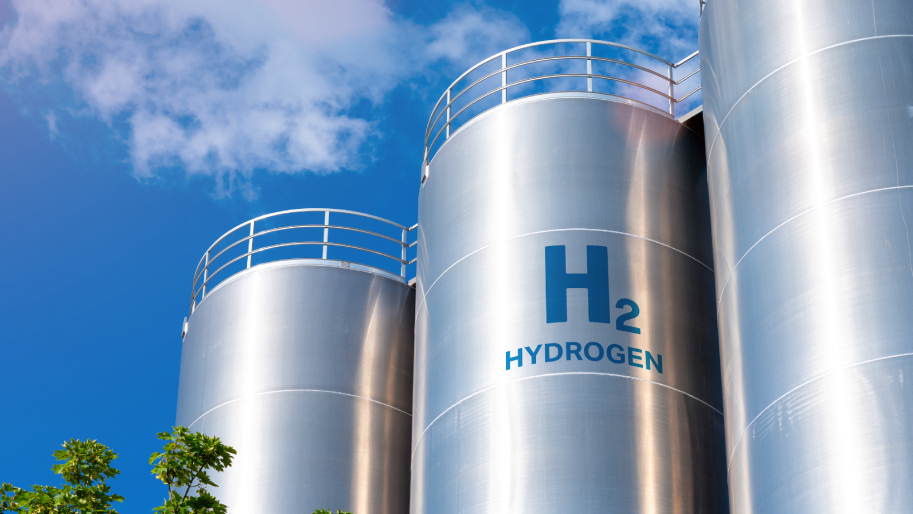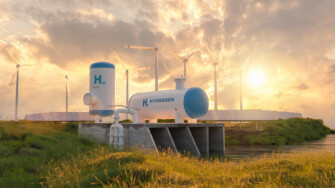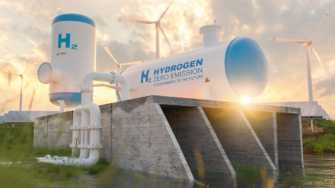Hydrogen in California: Production, Delivery, and End Uses

Today, more than 95 percent of hydrogen is produced from natural gas, a fossil fuel, local air quality pollutant, and climate-wrecker. Hydrogen combustion produces significant amounts of nitrogen oxides that are directly harmful to human health and contribute to the formation of smog. Although hydrogen is not a direct greenhouse gas, it is considered an indirect one. As hydrogen rises in the atmosphere, it interacts with other compounds to exacerbate the effects of methane, a potent greenhouse gas.
“Green hydrogen,” which is more climate-friendly, is produced using a process called electrolysis. Electrolysis involves running an electric current through water to split the hydrogen and oxygen, then collecting and compressing the hydrogen.
With the recent surge in government investments in hydrogen projects and the promise of related jobs, policymakers must consider the climate and public health impacts before hastily investing more public resources in this field. For policy details, please see The Climate Center’s June 2023 Hydrogen Policy Guidance.
Production: The Three Pillars
Public investments in hydrogen in California must be limited to truly clean, renewable hydrogen. It must adhere to these three pillars:
- Hydrogen must be produced using newly-constructed renewable energy resources built specifically to make hydrogen. This way, gas plants aren’t fired up to meet the new demand. Exceptions can be made where agreements are made to utilize surplus renewable energy from existing solar and wind facilities.
- Production must be co-located with end use, or at least within the same region to ensure that the electrolyzers are indeed run on renewable energy.
- Electrolysis must be limited to operating only when the renewable resource is generating electricity.
In addition, communities potentially impacted by any hydrogen proposal must be meaningfully engaged in decision-making. See the environmental justice and environmental principles letter to the governor and other state leaders in early 2023 regarding the buildout of hydrogen in California.
Storage and Delivery
Renewable hydrogen production facilities should be located near the hydrogen’s end use. This avoids the need to move hydrogen over long distances, regardless of how it is moved.
Moving hydrogen around is difficult, expensive, and has potential public safety consequences. Hydrogen leaks are dangerous and can potentially cause fires or explosions. In addition to the safety risk, leaked hydrogen has a global warming potential 12 times greater than carbon dioxide over a 100-year time period.
End Uses
Policymakers should only allocate public funding to hydrogen projects for hard-to-electrify purposes. That’s because hydrogen is inefficient and costly to produce in areas better suited for electrification. For example, a hydrogen fuel cell vehicle is about three times less efficient than a comparable battery-electric vehicle.
To achieve its climate goals by 2045, California should conduct a formal assessment of hydrogen that compares the costs, benefits, and efficiency of the following end uses:
- Light-, medium-, and heavy-duty vehicles, including long-haul trucks
- Long-distance trains
- Aviation
- Maritime shipping
- Electricity generation

